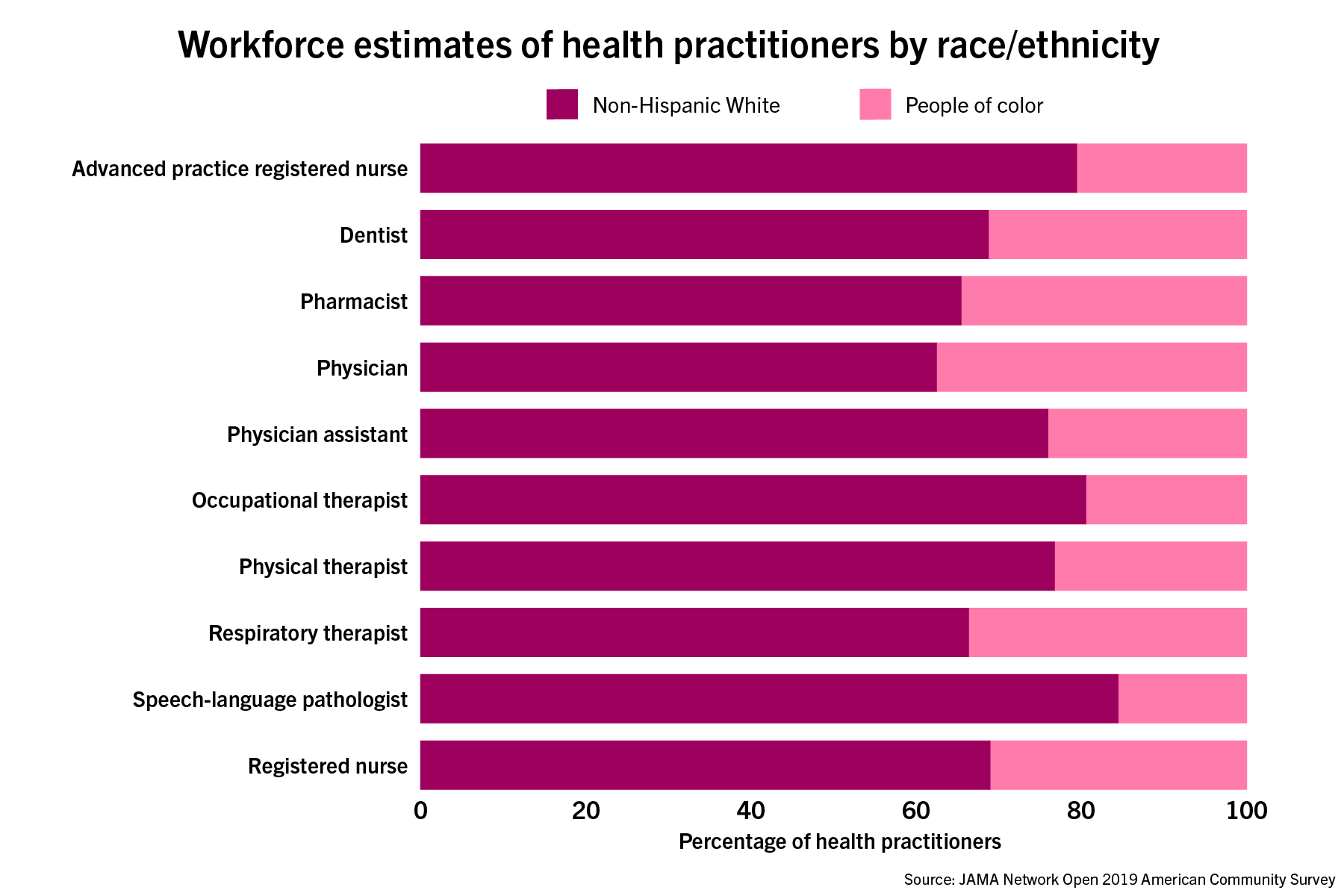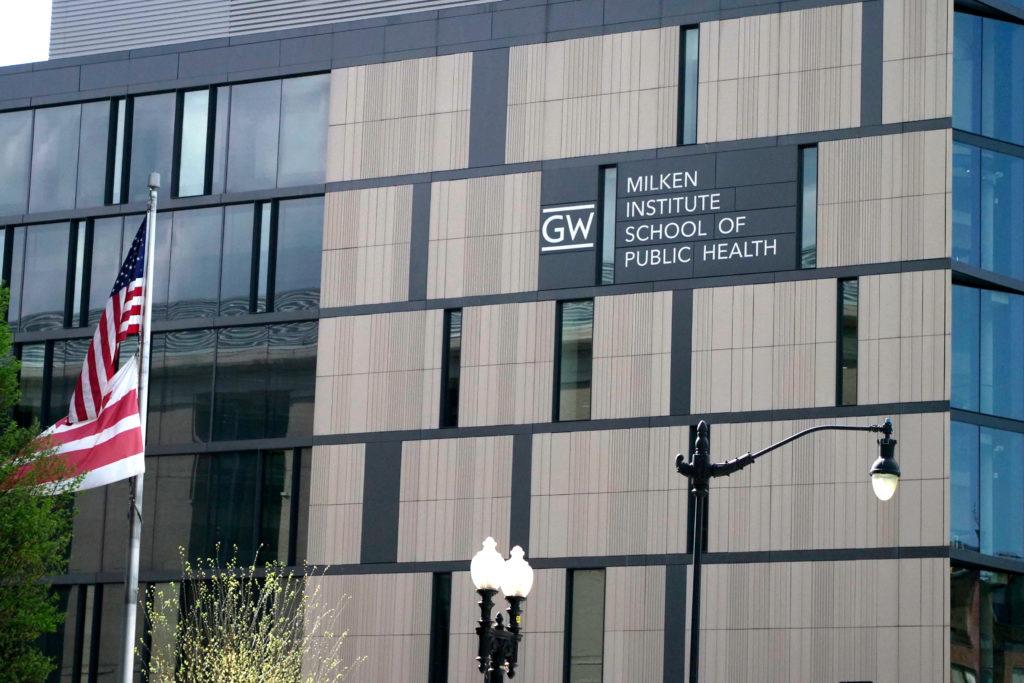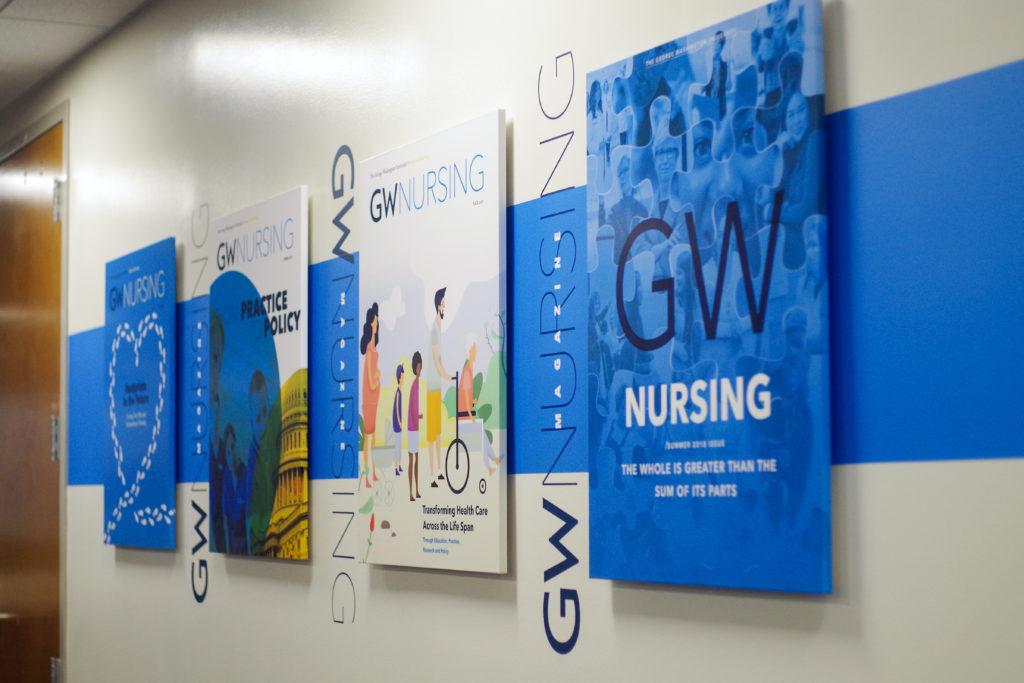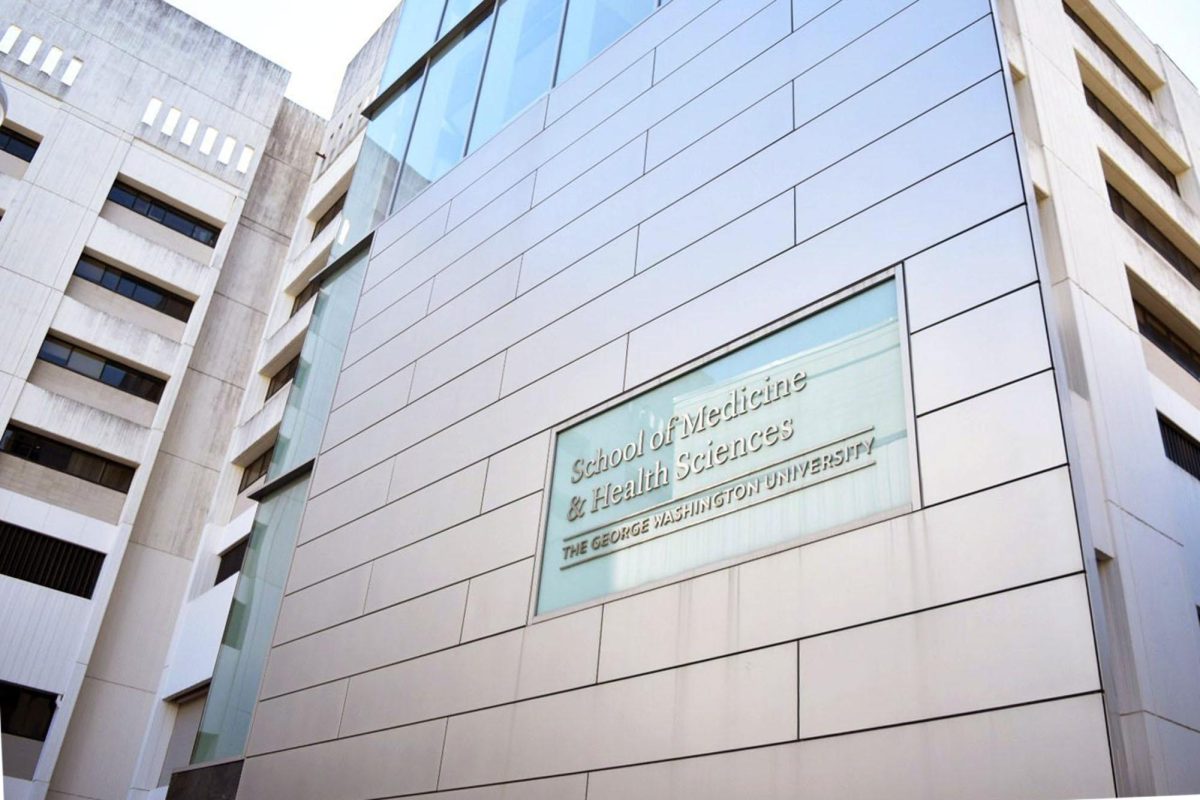Updated: April 19, 2021 at 2:04 p.m.
Educational barriers contribute to a lack of diversity in the health care workforce, Milken researchers found in a study conducted late last month.
Edward Salsberg – the lead researcher of the study examining 2019 data on health care industry professions – found that a shortage of Black, Hispanic and Native American graduates could continue to limit workforce diversity across the country. Salsberg said he encourages medical institutions to ensure their educational requirements aren’t barriers to cultivating a more diverse workforce.
“There is some literature and documentation that shows that a more diverse workforce will help address disparities in health outcomes and health care,” Salsberg said. “Black, Hispanic and Native American practitioners are more likely to serve underserved areas and underserved populations, and having a diversity class in the pipeline improves cultural sensitivity for all practitioners.”
Salsberg said researchers created a “diversity index” to determine which ethnic and racial groups were underrepresented in 10 health care positions, like nurses, physician assistants and physical therapists. The index divides the total number of health care professionals from a specific ethnic or racial group by the total working age population of that ethnic or racial group in the country, he said.
He said the researchers used 2019 population data with employment trend statistics from the Census Bureau’s American Community Survey and the National Center for Education Statistics’ demographics data on college graduates to analyze diversity across the professions.
A diversity index scoring of less than one indicates underrepresentation of a racial or ethnic group in that health care profession and a score equal to one meant there was equal representation, according to the study. The mean diversity index was 0.54 for Black individuals, 0.34 for Hispanic individuals and 0.54 for Native American individuals, according to the study.

Nicholas Anastacio | Staff Designer
Black, Native American and Hispanic individuals were most underrepresented in the physical therapist profession and best represented in the respiratory therapist profession, according to the study.
“We do encourage institutions and professions to re-examine their programs and examine their requirements and try and respond and identify strategies that would work in their profession to increase diversity,” Salsberg said.
Salsberg said there were fewer Black graduates than there were Black medical professionals in the workforce in five of the 10 health care professions in 2019. He said the disparity of Black graduates in the educational pipeline could be tied to an increase in educational requirements for some professions.
“That seems to be the case for physician assistants where they used to need an associate or bachelor’s and now you need a master’s degree,” Salsberg said. “And we found that Blacks, Hispanics and Native American representation in physician assistants were decreasing based on the pipeline compared to the workforce.”
Salsberg said his team wants to conduct more research into an additional 20 health care professions in the future to continue addressing the lack of diversity in the health care workforce.
Experts in health care said diversity in the workforce will increase trust between patients and providers. They said the difficulties that some minorities face in receiving education could influence this lack of diversity.
Only 37 percent of Black young adults have at least a two-year college degree compared to more than 50 percent of White young adults, according to a study by the Institute for College Access and Success.
Gregory Hall, a professor of integrative medicine at Northeast Ohio Medical University, said patients are more likely to take advice about medication or surgeries from a doctor of a similar background.
“What we’re missing in the workforce is people who can identify with the people that they’re seeing,” Hall said. “African Americans are 13 percent of the population and even less of the workforce, and they are disproportionately going to the hospital, needing to go to the hospital, needing to see doctors and they’re not seeing anything close to what they should be seeing.”
Hall said standardized tests like the MCAT, which medical students must take, are “deliberate barriers” to increasing diversity in the health care system because testing is not an accurate measure of ability to provide quality medical care. He said underrepresented groups in medicine, like Black Americans, are more likely to receive lower test scores because they don’t receive necessary support to get into medical school.
“This sort of objective measure is preventing a ton of people from gaining admission to nursing schools and medical schools, all kinds of college schools, and that’s happening all across the country,” Hall said.
Aliria Rascon, a clinical associate professor at the Edson College of Nursing and Health Innovation at Arizona State University, said competitive medical programs can create a “divide” between first-generation students, who are not familiar with the admissions process, and the rest of the applicant pool. She said higher education health professionals can tend to serve students from the majority population and should instead work toward representing more diverse cultures.
“So who gets in?” Rascon said. “It’s those who know how to navigate that system. And those who don’t know how to navigate that system are now immediately at a disadvantage.”
Rascon said the Milken study highlights the disparities in the health care system that may push institutions to support underrepresented communities in health care. She said institutions need to invest in more scholarship and mentoring programs for students who do not have access to these resources.
“We do need these statistics that tell us the reality, but we can’t stop there,” Rascon said. “It’s so important that we share these results to actual parties and institutions and organizations and people that can do something about them, instead of solely keep talking about how inequity is such a serious issue.”
This post has been updated to clarify the following:
This post has been to clarify a paraphrase from Rascon.








